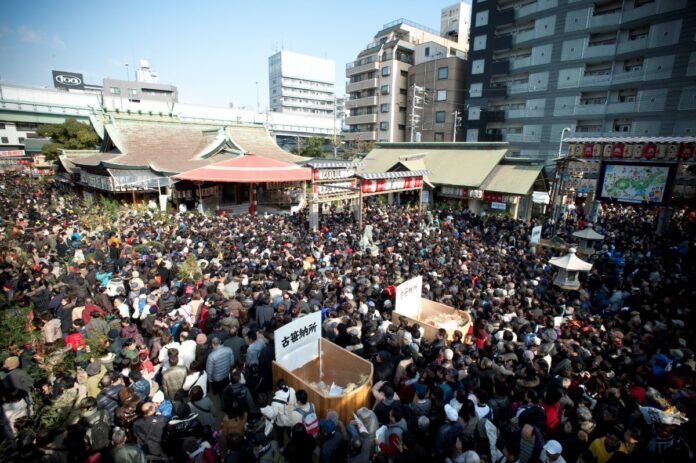
New Year is traditionally one of Japan’s most important holidays, and a rare occasion where many of the country’s businesses close for the day. One popular way to celebrate Japanese New Year is with hatsumode, the first shrine visit of a new year. However, in a bid to reduce crowding amid concerns over COVID-19, many shrines encouraged would-be visitors to stagger this year’s hatsumode celebrations and attend in the days before and after New Year’s Day instead. As a result, 2021 has seen a different New Year from usual, with visitor numbers at major shrines down significantly compared to most years. Toka Ebisu
While hatsumode and other New Year festivities are fairly well-known, another festival at this time of year that you might know less about is Toka Ebisu. Held on and around 10th January every year, Toka Ebisu is another busy shrine festival that honours the popular deity Ebisu. Ebisu has historically had an especially strong following in the Kansai region, where the most important Ebisu shrines can be found. This makes Toka Ebisu a major local event that you can’t see in many places. Read on to learn about the history of Ebisu and the festival, including some of Toka Ebisu’s main traditions.
Table of Contents
Who is Ebisu?
Ebisu is one of the Seven Lucky Gods (shichifukujin) of Shinto tradition, and along with Daikoku, he is probably the most popular. Ebisu and Daikoku are often seen together as a motif intended to bring good luck, especially to businesses, and they may also be portrayed with the other Seven Lucky Gods on a boat called the takarabune.
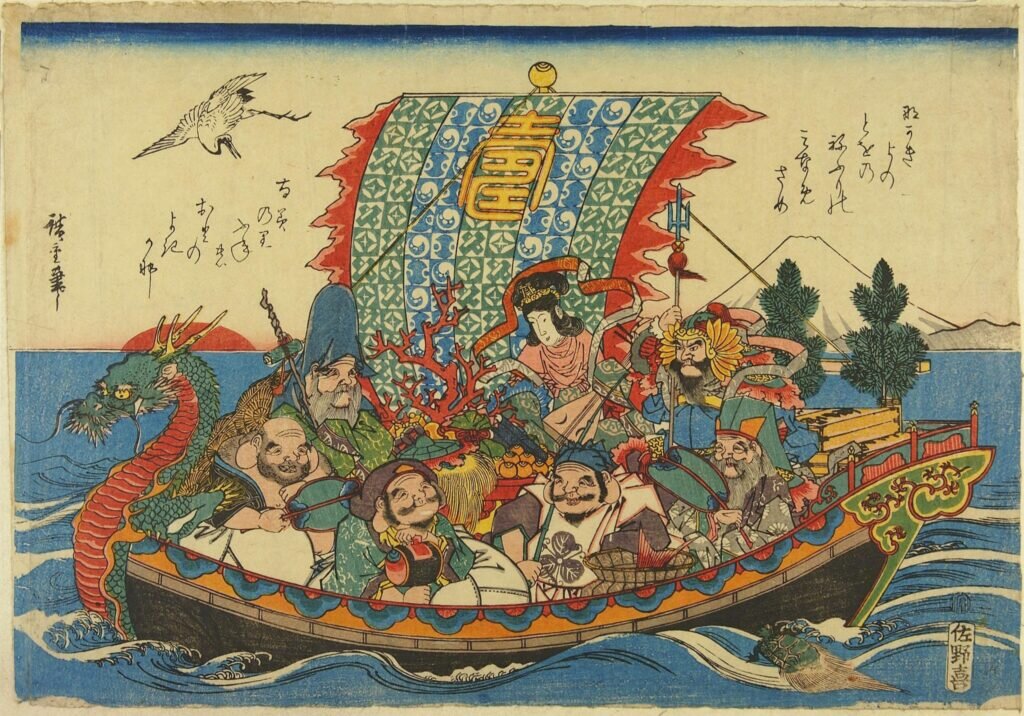
Source: Victoria & Albert Museum https://collections.vam.ac.uk/item/O74843/the-treasure-ship-woodblock-print-utagawa-hiroshige
Religious syncretism is very common in Japanese history, and many kami – Shinto deities – are connected with gods introduced from China (read more about Osaka’s religious history here). However, unlike his other friends on the takarabune, who were originally imported to Japan from Hindu and Buddhist traditions, Ebisu is entirely a local creation. There are versions of his story that even associate him with Izanami and Izanagi, important characters in the Shinto creation myth. According to some legends, Ebisu is Izanami and Izanagi’s first son, but after he was born without bones and still couldn’t walk after three years, he was cast away and washed up in the far north of the Japanese islands. His connection with northern Japan, which was beyond early Japanese emperors’ area of control, may explain the origin of his name: “Ebisu” is said to have come from old Japanese words for “foreigner” or “barbarian”.
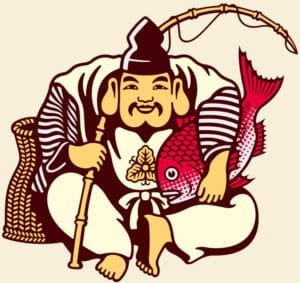
Source: Yebisu Beer official website https://www.sapporobeer.jp/yebisu/
Ebisu has been worshipped since ancient times, originally as a kami who protected fishermen. Early Ebisu shrines were therefore usually located near the water. As Osaka’s main Ebisu shrine today, Imamiya Ebisu, is many miles from the city’s port area, this might seem strange, but hundreds of years ago – and even as recently as the early 20th century – the Osaka coastline looked quite different. The shore in the ancient Osaka area was so much further east than today that places corresponding to Osaka Castle and Tenmabashi were originally fishing ports. Because of this, a god of fishermen was actually a perfect choice for people living in ancient Osaka. Ebisu’s association with fishing can still be seen today, for example in common depictions of him holding a sea bream. This also works as a visual pun, as tai (“sea bream”) is associated with medetai (“auspicious”), making it a symbol of good fortune.
Over time, the coastline of Osaka Bay moved further west, so early important locations like Sumiyoshi Grand Shrine were no longer on the shore. The towns growing in the area were still connected to the sea thanks to canals, but the focus moved away from fishing to commerce. This may be part of why, by the 12th century CE, Ebisu came to be linked not just with fishermen, but merchants in general. In early modern times, Osaka became a major mercantile centre, making the relationship between Ebisu and the marketplace even stronger.
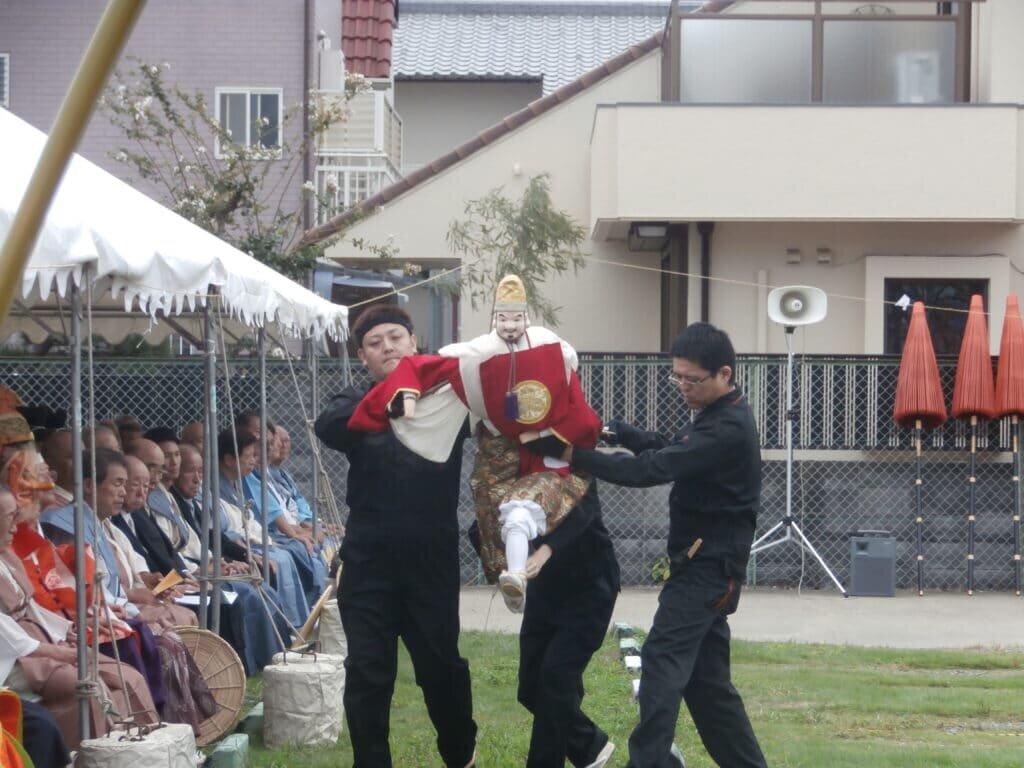
Another reason for Ebisu’s popularity outside of fishing communities could be the influence of wandering puppeteers from the main Ebisu shrine in Nishinomiya, which in the past was part of Settsu Province along with Osaka. As well as spreading the worship of Ebisu around the country, these travellers were also behind the origins of Japan’s puppet theatre tradition (read more about Osaka’s role in Japanese puppet theatre here). Puppetry remains a part of rites involving Ebisu today, and puppets can often be seen at Ebisu festivals.
Ebisu shrines in and around Osaka
There are many Ebisu shrines all over Japan, but from Osaka you can easily reach some of the main shrines. Today I’ll focus on two of these: Imamiya Ebisu Shrine and Nishinomiya Shrine. The Toka Ebisu festival at these two shrines is extremely popular with locals, who call Ebisu and the shrines “Ebessan”.
For many readers, the most accessible shrine for enjoying the Toka Ebisu festival is Imamiya Ebisu in southern Osaka. The nearest station is Imamiyaebisu Station on the Nankai line, but since only local Koya line trains stop there, Ebisucho and Daikokucho Stations on the Osaka Metro may be more convenient. It’s also a short walk from big shopping areas like Namba and Nipponbashi.
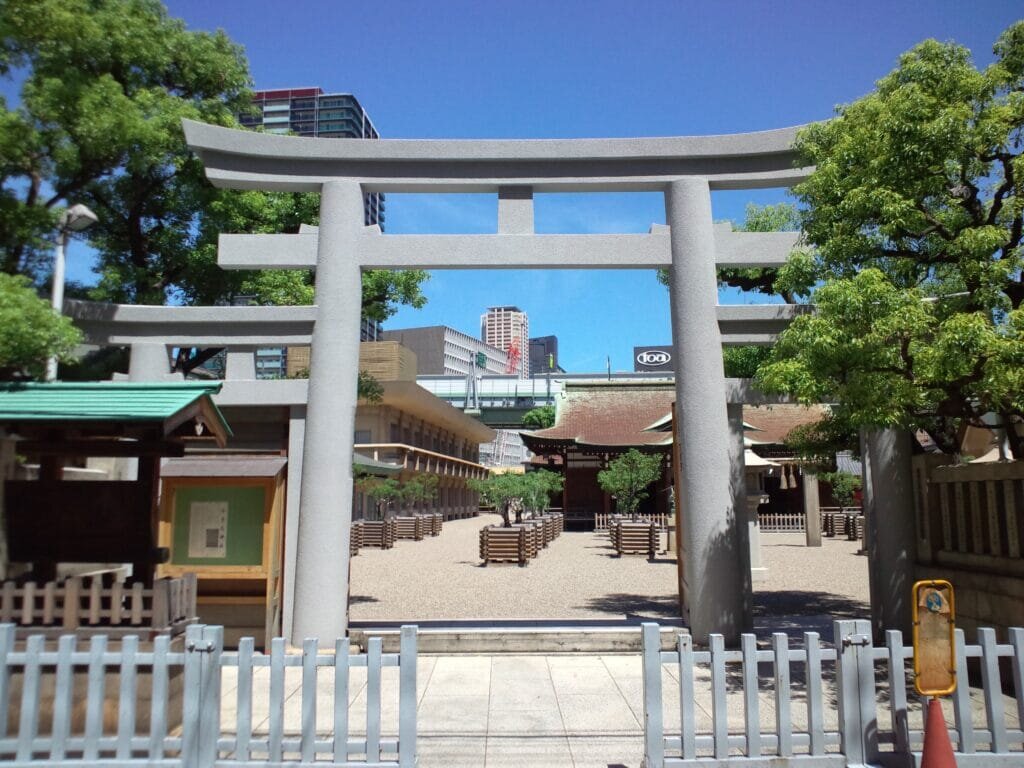
Source: Wikipedia https://commons.wikimedia.org/wiki/File:Imamiya-Ebisu-jinja_Torii.jpg
Imamiya Ebisu Shrine was founded in the 7th century CE, when it was associated with the temple of Shitennoji. The connection with Ebisu came later, and the shrine held a regular market that was so popular with local merchants that a bridge – Ebisubashi – was built to improve access to the shrine. That market no longer exists, and today the shrine is usually quiet, rather unlike the bustling downtown area nearby. On the other hand, Toka Ebisu is still a hugely popular event, with over a million visitors attending the festival every year and the surrounding streets filling up with food stalls and a lively parade.
Nishinomiya Shrine, the head shrine for all the Ebisu shrines in Japan, is a little further away, but still within easy reach of Osaka. It is only a few minutes’ walk from the Ebisuguchi exit of Hanshin Nishinomiya Station, which is accessible on any Hanshin train from Namba or Umeda to Sannomiya.
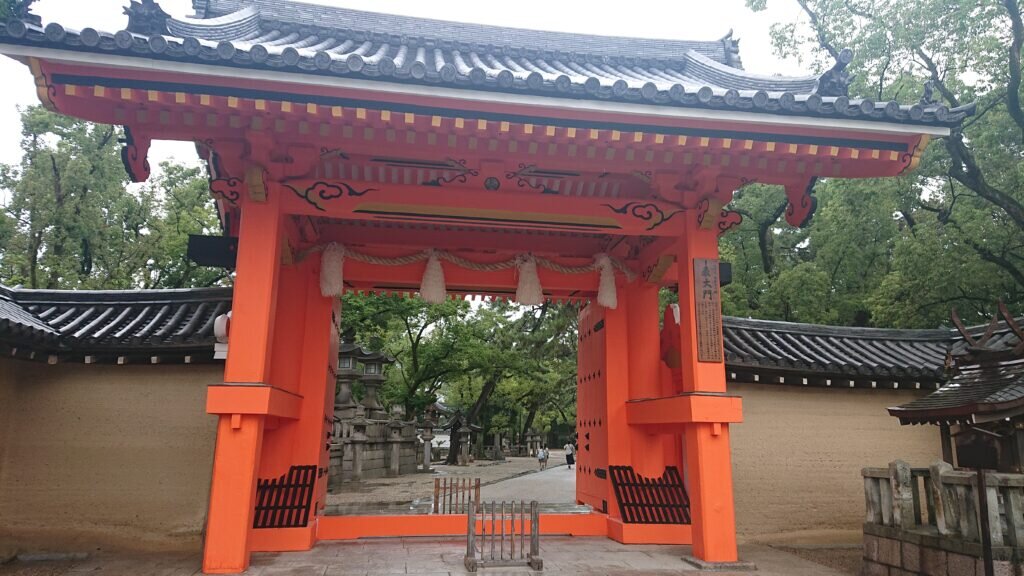
Like Imamiya Ebisu, Nishinomiya Shrine has a long history. Its date of establishment is not exactly known, as there are some indications that it might have existed since ancient times, but the first clear recorded reference to the shrine is from the 12th century. Many Ebisu traditions, such as his association with Izanami and Izanagi, originated at Nishinomiya Shrine, as well as some customs that are common in Shinto in general. It is claimed that the practice of clapping before praying at a shrine began here, because of the popular belief that Ebisu is hard of hearing. By the 13th century at the latest, Toka Ebisu started at Nishinomiya Shrine, where rituals were held in honour of Ebisu around the 10th day of the first month. Although Nishinomiya’s population is far lower than Osaka’s, their Toka Ebisu events also bring in huge numbers of visitors.
Toka Ebisu traditions: fukuzasa, omaguro and fukuotoko
10th January is the Toka Ebisu festival’s main day, or hon ebisu. Events are also held on the surrounding days, particularly the 9th, or yoi ebisu (roughly “Ebisu Eve”) and the 11th, or nokori fuku (roughly “leftover blessing”). Toka Ebisu involves many of the features you would expect from hatsumode or other Japanese shrine festivals, like food stalls that spread out from the shrine grounds into the streets in the local area. It also features several of its own distinctive traditions.
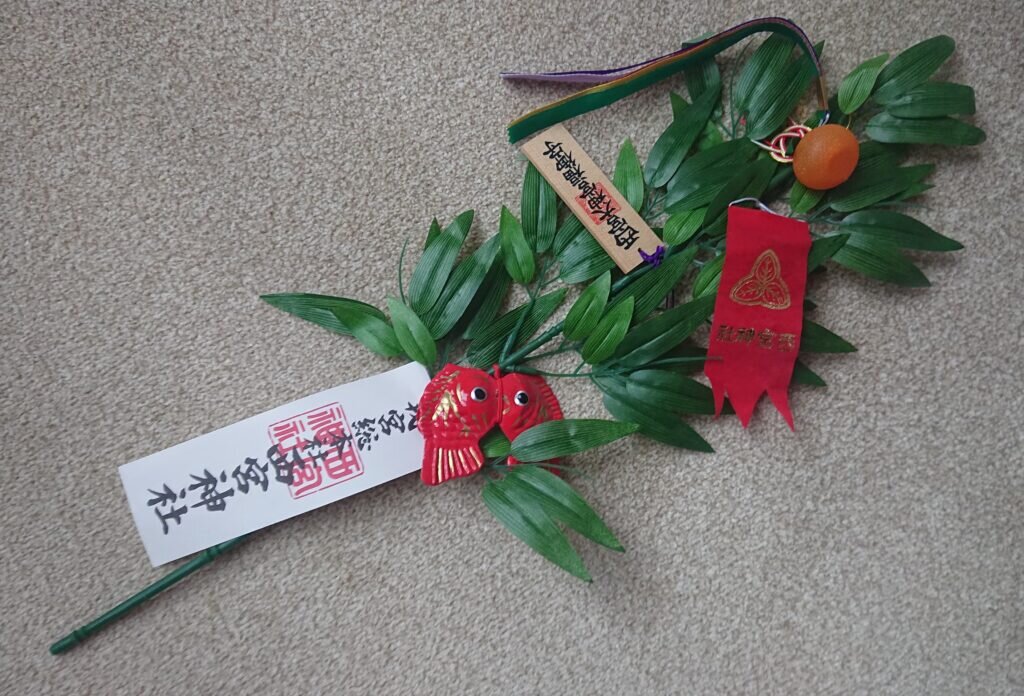
At most shrine festivals, various kinds of charms and talismans are available for sale, and Toka Ebisu is no exception. There are many charms specific to this festival, most prominently the fukuzasa. A fukuzasa is a piece of bamboo grass decorated with prayer slips and auspicious symbols like sea bream. The bamboo grass – which is nowadays made from plastic – supposedly represents Ebisu’s fishing rod, as well as symbolising vitality because it grows at all times of year. People buy fukuzasa at the shrine and pray for good fortune, then continue the ritual the following year by returning it and buying another.
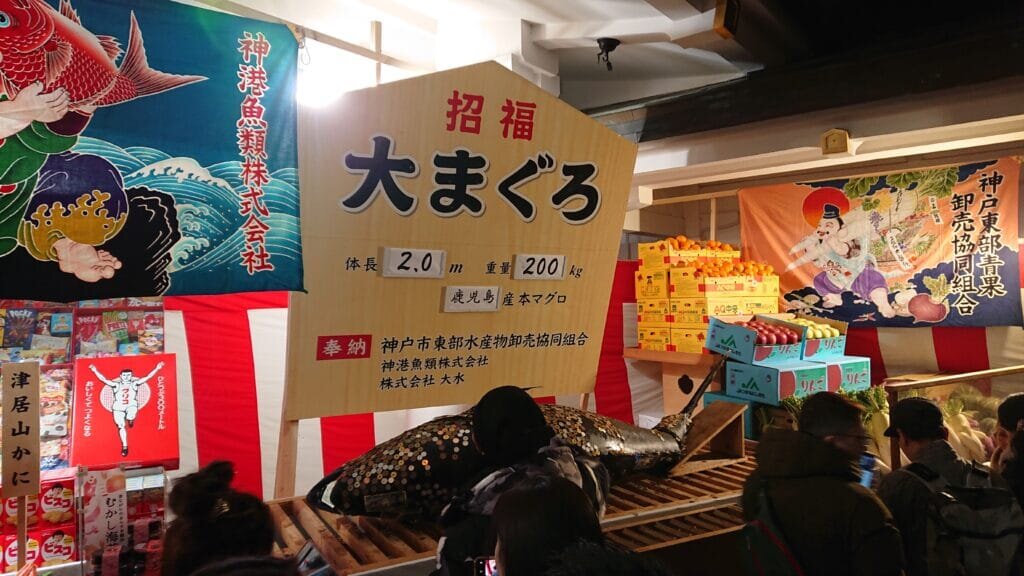
An unusual tradition held at some Ebisu shrines is the offering of the omaguro – an enormous tuna. During Toka Ebisu at Nishinomiya Shrine, you can enter the main shrine building, where the omaguro is on display. It is donated by people from Kobe fish markets to pray for prosperity in the new year. Visitors are encouraged to try to stick coins on to the fish, and it’s believed to be good luck if the coin stays in place.
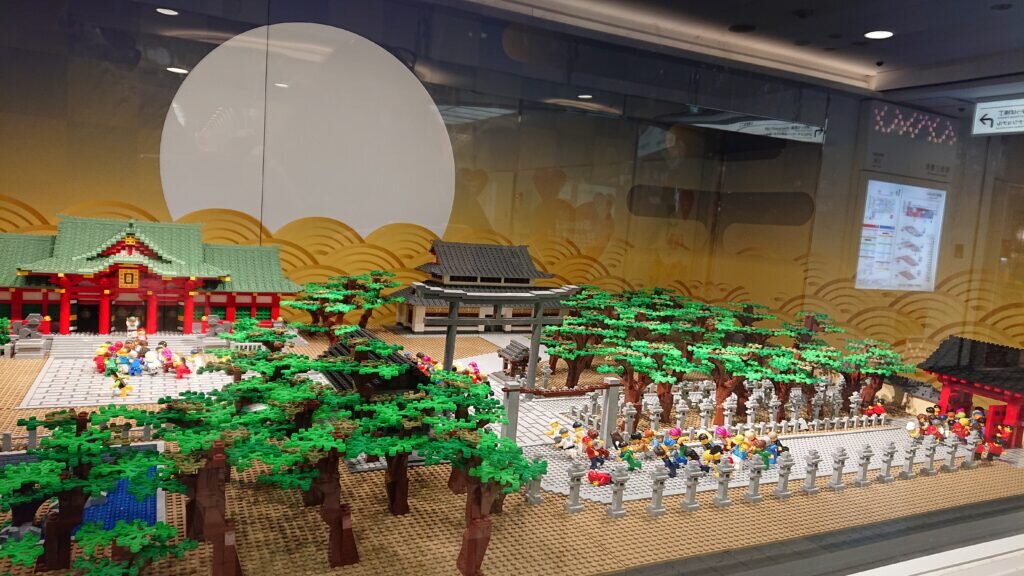
One especially well-known part of Nishinomiya Shrine’s Toka Ebisu festivities is the fukuotoko (“lucky man”) race. This long tradition has its origin in the more austere customs that were once important to Toka Ebisu. Locals would traditionally stay at home quietly throughout the 9th day, before washing themselves and visiting the shrine when it reopened on the morning of the 10th. The race to reach the main shrine first after the gates open eventually became a literal race.

108 runners are chosen by lottery to be at the front of the pack, and then at 6:00 am, the main gate opens and they sprint for 230 metres through the grounds to the shrine hall. The first three are the “lucky men” – though there is no rule that they must be men – who receive prizes including an Ebisu statue, beer and rice, and can expect good fortune in the coming year. The fukuotoko race attracts many spectators, who watch the runners start and then follow behind them to see the announcement of the winners and to pray at the shrine themselves. This event has become so famous that it is even broadcast on Japanese TV.
Toka Ebisu in 2021
In the past year, many events have been cancelled, postponed or altered in the interests of public safety. Toka Ebisu has been affected by this too. As with hatsumode, shrines have encouraged people to stagger their visits rather than come all together during the height of the festival. Fukuzasa will be sold not only on the festival days, but also for the rest of January, to help avoid crowding.
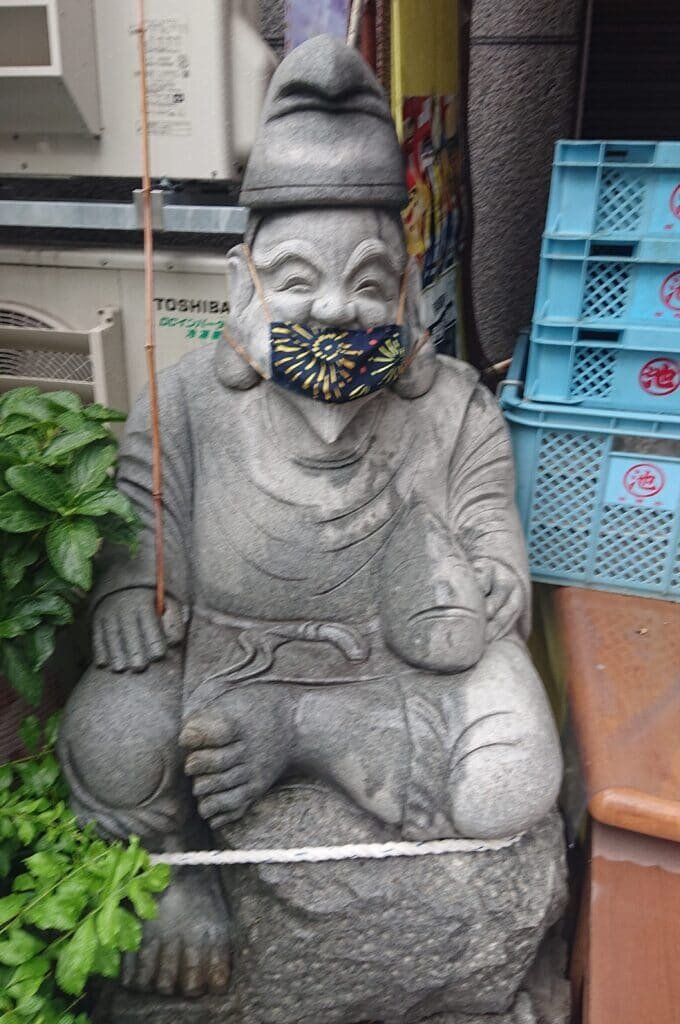
Some of the usual rituals have also been changed. For example, although the omaguro will be offered to Ebisu and put on display as normal, visitors will not be allowed to stick coins onto it. Meanwhile, the fukuotoko race has been cancelled entirely, as it normally attracts many visitors from all over the country. The typical food stalls in the surrounding streets will also be absent this year.
These necessary changes mean that unfortunately, this year’s Toka Ebisu will lack some of its usual special features, but luckily the shrines hold other events throughout the year too. Around 10th July, Nishinomiya Shrine hosts Natsu Ebisu, the summer counterpart to Toka Ebisu. Also, some shrines, including Kyoto Ebisu Shrine, celebrate Hatsuka Ebisu on 20th October. The tradition of having an Ebisu festival in October comes from the legend that in the tenth month of the old calendar, all the kami travel to Izumo Shrine except for Ebisu, who is too deaf to hear the summons. Another suggestion is that because he protects the marketplace, people can’t go for a month without him. Apart from these festival times, the shrines are also open all year round, so visitors can explore the grounds and buy charms and souvenirs at any time.
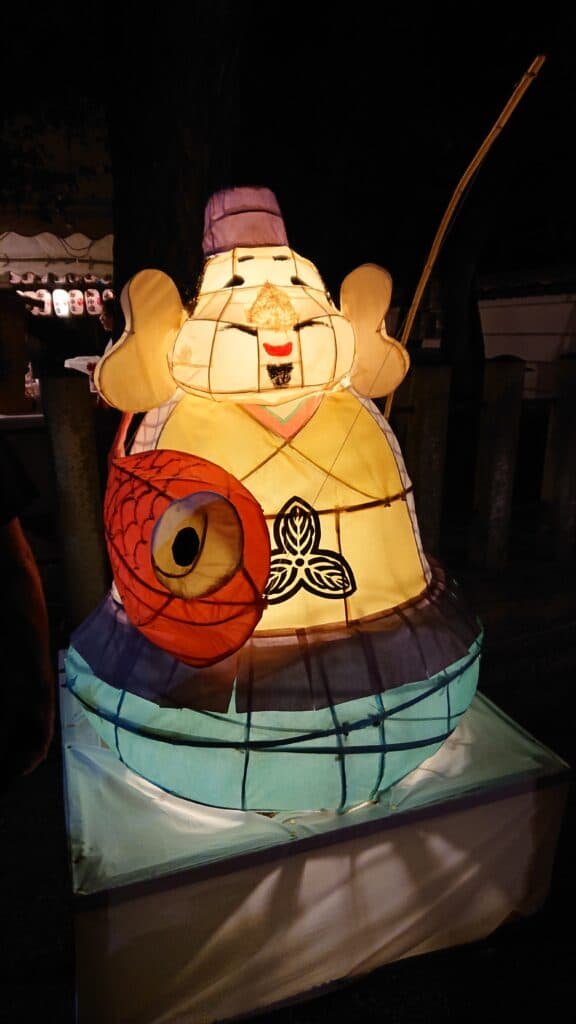
Toka Ebisu may not be going ahead quite as planned in 2021, but its traditions give us a fascinating look into the local culture of the Kansai region. Hopefully next year, these popular festivities can come back. Until then, whether or not we can visit shrines in person for hatsumode or other events like Toka Ebisu, we can all still wish for a happy and prosperous year ahead.
Except where otherwise noted, images are photographs taken by the author.




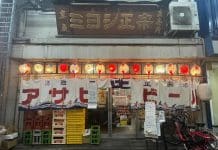



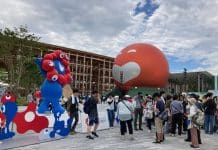











[…] in Japan: Ebisu – Der vertraute FremdeJNTO: Toka Ebisu TaisaiOsaka.com: Toka Ebisu – a popular annual festival (engl.)Discover Kyoto: Toka Ebisu (engl.)Kyōto-Ebisu-Schrein: Ofizielle Website zum Tōka Ebisu […]